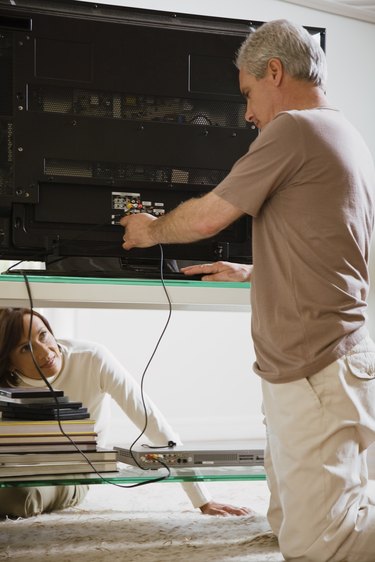
A television's refresh rate is most commonly associated with the incoming feed. Short of replacing your current set with one featuring a higher native refresh rate, the best way to improve the refresh is to ensure that the incoming signal is optimized for the source you are using.
Step 1
Ensure the native resolution of the incoming signal matches the resolution of the set. For example, make sure the Blu-ray player or video processor is sending images to your television at 1080p, if your set is also 1080p. Change this under the "Video Options" submenu inside your source device's setup menu. Removal of excess video processing functions helps with removing the "shaky" appearance of credits and fast-moving objects.
Video of the Day
Step 2
Use 24 hertz on Blu-ray sources, if your set and player support this. This is commercially referred to as "24p." This refresh rate exactly matches the rate used on film-based sources, such as a Blu-ray of your favorite Hollywood release. Smoother and cleaner images are usually the result.
Step 3
Make sure all other video sources are running at 59.94 hertz. This is the standard refresh rate for the majority of high definition sources. This can be determined using the "Info" feature found on most HDTVs, which details information about the incoming feed. Change this to precisely 59.94 hertz at your source device if it allows it, again using the "Options" or "Setup" feature. Dedicated video processors allow this almost universally.
Video of the Day